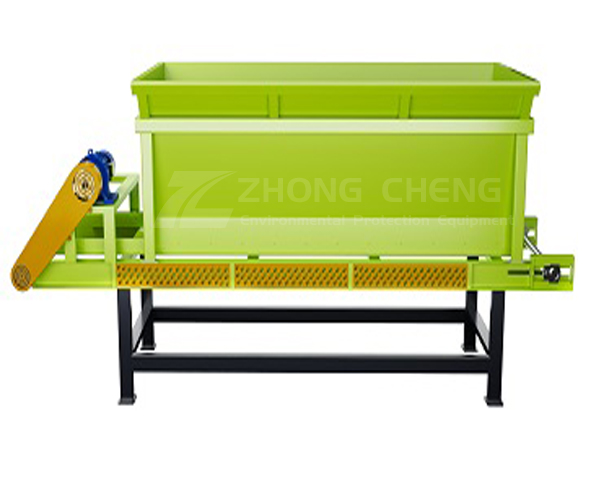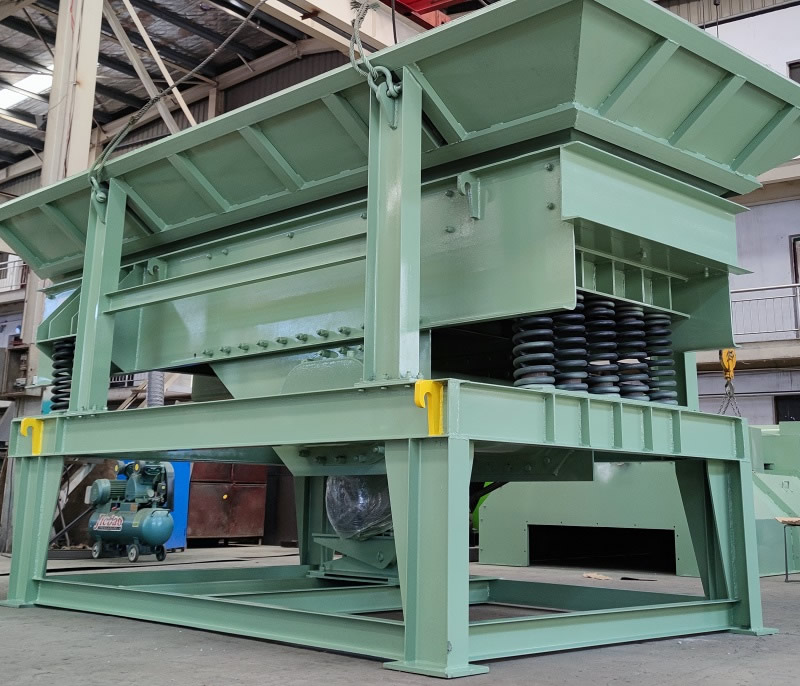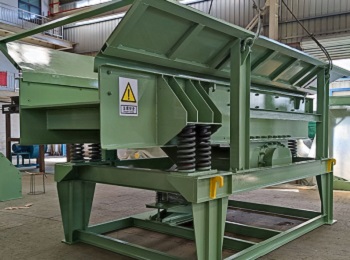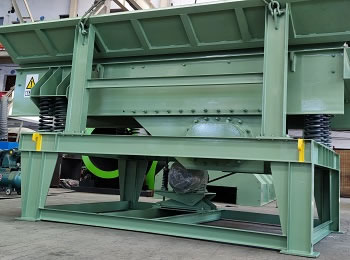
The ZUF series uniform feeder is a device that ensures sufficient supply of materials to the RDF forming machine, usually located between the shredder and the forming machine. It can reduce the direct pressure of materials on the RDF forming machine, prevent the RDF forming machine from running abnormally due to overload, and enable materials to smoothly enter the RDF forming machine, achieving continuous production and uniform feeding.
The uniform feeder is mainly composed of the frame, bin body, material feeding shaft, chain plate, bin shaft, observation port, bin cover, infrared sensing port, and other parts. It has a high degree of automation and is suitable for uniform feeding of industrial waste, MSW, biomass straw and other materials.
The driving device of the uniform feeder adopts cycloidal reducer, motor, and variable frequency speed control design to supply materials to the forming machine at a uniform speed. The side wall of the machine is equipped with an infrared sensing device. When the material reaches a certain level, it is transmitted to the feeding system through infrared sensing to adjust the feeding amount. This can achieve a matching between the shredding amount and the pressing block forming amount, ensure reasonable production capacity, avoid material blockage and overload, and protect the shredder and forming machine.

1. Material characteristics: Firstly, you need to understand the properties of the material you want to handle, including particle size, humidity, viscosity, etc. Different materials have different requirements for the feeder. For example, for materials with high viscosity, it may be necessary to choose a feeder with vibration function to prevent material blockage.
2. Production demand: Determine the specifications and models of the feeder based on the production line's capacity requirements. If a continuous and stable material supply is required on the production line, equipment that can provide a stable feeding rate should be selected.
3. Feed quantity control accuracy: Some processes may require precise control of the feed quantity, in which case it is necessary to choose a feeder with higher precision control capability.
4.Equipment structure and maintenance: Considering the ease of use and maintenance costs of the equipment, it is wise to choose a feeder with a simple structure that is easy to clean and maintain.
5.Safety: Ensure that the selected feeder meets relevant safety standards and has necessary safety protection measures.
6.Supplier reputation and service support: Choose a supplier with a good reputation and service network to receive timely technical support and repair services in case of equipment problems.
Variable frequency speed control design, achieving stepless adjustment of feeding amount.
Closed structure, low working noise, low pollution, beneficial for improving the working environment.
The feeding amount is uniform and continuously stable, improving the processing capacity of the production line.
Simple structure, strong material adaptability, small maintenance volume, and low maintenance cost.


The principle of achieving uniform material supply through a uniform feeder is achieved by precisely controlling the flow velocity and flow rate of the material.
Taking the vibrating feeder as an example, its principle of achieving uniform material supply is mainly based on the centrifugal force generated by the rotation of the eccentric block of the vibrator. This centrifugal force causes the movable parts such as the sieve box and vibrator to undergo forced, continuous circular or approximately circular motion. The material is continuously thrown on the inclined screen surface along with the screening chamber, and is continuously and evenly delivered to the receiving port. By adjusting the parameters of the vibration motor, the vibration frequency and amplitude can be controlled, thereby adjusting the supply rate and flow rate of materials.


| Model | Processing Capacity(t/h) | Power(kW) | Feeding Width(mm) |
| ZUF | 3-15 | 3-6 | 1000-1500 |
*The output will vary according to different materials, feed particle size and other factors.
Save Time! Get A Detailed Quotation Quickly.
